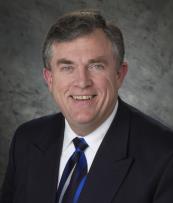Abstract:
Wind induced fatigue cracking is one of the primary modes of failure of highway sign, signal and high level luminaire support structures. Although fatalities from failure of these structures have been rare, the potential risk of property damage and safety hazards remain high, and the economic impact of inspecting, maintaining and replacing the sheer volume of existing structures remain paramount. Traditionally, the subject structures were seldom designed against fatigue fracture. In absence of sufficient experimental database, fatigue resistance of the various connection details in these structures were never well established and the existing specifications remain deficient. Recently, a comprehensive research program was conducted at Lehigh University under the NCHRP Project 10-70, where fatigue performance of several critical welded connections in subject structures were evaluated by extensive analytical and experimental studies. As part of these studies, fatigue resistance of connection details in the existing inventory were defined and new cost effective fatigue resistant alternatives were developed. About 80 full size galvanized specimens of sign, signal and high level luminaire support structures containing different welded connections were fatigue tested. Using parametric Finite Element Analyses (FEA) verified by test data, fatigue performance of the connections in both finite and infinite life regimes were evaluated and optimized over the range of applicable geometric dimensions. New specification recommendations were developed based on these research findings for cost effective design of sign, signal and luminaire support structures in highway infrastructure. These revisions to the existing AASHTO specifications were adopted by AASHTO Subcommittee for Bridges and Structures r(SCOBS) in their annual meeting in Austin, TX, in July 2012.
Bio sketch of the speaker:
Dr. Sougata Roy is a Principal Research Scientist with the ATLSS Engineering Research Center, and an Adjunct Faculty with the Department of Civil and Environmental Engineering at Lehigh University. Sougata received a Baccalaureate degree in Civil Engineering from the University of Calcutta in India, and Masters and Doctoral degrees in Civil Engineering from Lehigh. Dr. Roy is an expert in Structural Engineering with specialization in Fatigue and Fracture of Steel Structures. He is leading funded research in System Performance Evaluation, Deterioration and Damage Assessment, Failure Analysis, Forensic Studies and Life Cycle Prediction of Bridge and Highway Infrastructure, including simulation of large systems by advanced Finite Element Analysis, laboratory experiments and field measurements. Dr. Roy teaches undergraduate and graduate level courses on Bridge System Design, and Fatigue and Fracture of Steel Structures at Lehigh, and supervises doctoral, masters and undergraduate students with the Department of Civil and Environmental Engineering. He also offers courses for Pennsylvania Department of Transportation on Fatigue and Fracture Design of Steel Bridges. In addition to 13 years’ experience in the academia, Sougata worked 11 years in structural engineering consultancy designing and managing large bridge projects. Dr. Roy regularly publishes in technical journals and conference proceedings, presents at national and international conferences and committee meetings, and active member of national committees including TRB AFH70: Metal Fabrication Committee; and AISI/NSBA Design Advisory Group/Bridge Task Force, and ASCE/SEI Fatigue and Fracture Committee (current Chair).


